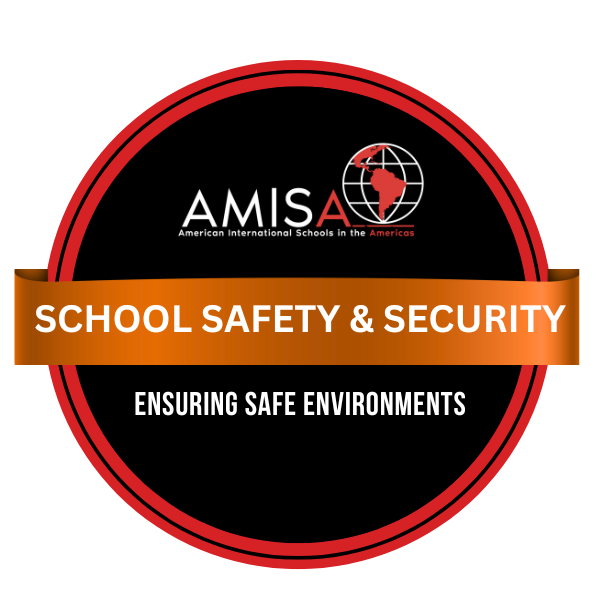Visionary and Fearless Thinking in Emergency Planning Management: Embracing "Future Events Aren't Real" (F.E.A.R.)
- Adam Slaton
- Sep 16, 2025
- 5 min read
by Michael Johnson, CEO, Clearpath EPM

In the dynamic and often unpredictable landscape of emergency planning management for schools, the ability to think both visionally and fearlessly is paramount. Traditional approaches often focus on reactive measures, meticulously planning for known threats and historical patterns. However, true resilience and innovation emerge when an emergency planning management program integrates a profound understanding of "Future Events Aren't Real" (F.E.A.R.) as a core philosophical component. This seemingly counterintuitive principle, when correctly applied, can unlock a new level of strategic foresight and courageous decision-making.
Deconstructing F.E.A.R. in Emergency Planning Management
The acronym F.E.A.R., in this context, is not about denying the possibility of future crises, but rather about reframing a school’s psychological and strategic relationship with them. It posits that:
Future Events are Projections, Not Certainties: While we can analyze trends, model scenarios, and assess risks, any future event, until it materializes, exists only as a mental construct. This distinction is crucial. When we treat potential disasters as immutable realities, we can become paralyzed by anxiety, leading to over-indexing on worst-case scenarios without proportional consideration for innovation or adaptability.
Emotional Detachment from Hypotheticals: Fear, anxiety, and panic are powerful motivators, but in planning, they can cloud judgment. By recognizing that "future events aren't real" in the present moment, school emergency planners can cultivate a necessary emotional detachment. This allows for objective analysis, rational resource allocation, and creative problem-solving without the burden of pre-emptive emotional distress.
Focus on Present Preparedness and Adaptive Capacity: If the future isn't fixed, then the most effective strategy is to build robust, adaptable systems in the present. This shifts the emphasis from predicting the exact nature of the next crisis to developing versatile capabilities that can respond to a wide spectrum of unforeseen challenges. It encourages investment in flexible infrastructure, cross-functional training, and agile decision-making frameworks.
Cultivating Visionary Thinking Through F.E.A.R.
Integrating F.E.A.R. into a school’s emergency planning management program fosters visionary thinking in several ways:
Breaking Free from Historical Bias: By acknowledging that past events, while instructive, do not dictate future ones, school emergency planners are less constrained by historical precedents. This opens the door to imagining entirely new threats, unconventional solutions, and innovative partnerships that might not fit traditional molds.
Encouraging "What If" and Embracing "Even If": F.E.A.R. liberates emergency planners to explore truly disruptive scenarios. The "what if" mindset, while valuable for initial brainstorming and risk identification ("what if a major earthquake occurs?"), can sometimes lead to analysis paralysis if it remains purely hypothetical. By contrast, the "even if" mindset is significantly more proactive and fearless. It shifts the focus from merely contemplating a possibility to actively preparing for it, regardless of its perceived likelihood ("even if a major earthquake occurs, we will have X, Y, and Z systems in place"). This leads to more comprehensive school risk assessments that consider low-probability, high-impact events, and, more importantly, drives the implementation of concrete preparatory actions.
Promoting Proactive Innovation: If the future is fluid, then the opportunity to shape it through proactive measures becomes apparent. Visionary thinking under F.E.A.R. encourages investment in research and development, early warning systems, and resilience-building initiatives that aim to mitigate vulnerabilities before specific threats emerge.
Designing for Resilience, Not Just Recovery: Instead of merely planning for post-disaster recovery, a F.E.A.R.-informed approach emphasizes building inherent resilience into schools and systems.
Fostering Fearless Decision-Making
F.E.A.R. is equally instrumental in cultivating fearless decision-making:
Reducing Analysis Paralysis: The recognition that future events are not yet real helps to alleviate the pressure of needing perfect information or absolute certainty before acting. Instead, it promotes a bias towards action, allowing for iterative planning and adjustments as new information becomes available.
Empowering Bold Experimentation: Fear of failure often stifles innovation. When school emergency planners understand that hypothetical failures are not actual failures, they are more willing to experiment with novel strategies, pilot new technologies, and challenge conventional wisdom. This creates a culture of continuous learning and improvement.
Enhancing Psychological Fortitude: Emergency planning management is inherently stressful. By internalizing the F.E.A.R. principle, school personnel involved in emergency planning and response can develop greater psychological resilience. They learn to compartmentalize the anxiety of potential future events, allowing them to remain calm, focused, and decisive when an actual crisis unfolds.
Facilitating Adaptive Leadership: Fearless school leaders are those who can make tough decisions under uncertainty. F.E.A.R. equips them with the mindset to lead with confidence, even when the path forward is not entirely clear, by focusing on building present capacity and fostering a culture of adaptability.
Practical Application of F.E.A.R. in a School EPM Program
To embed F.E.A.R., a school’s emergency planning management program might:
Shift Language: Replace terms like "inevitable disaster" with "potential challenge" or "scenario."
Scenario Planning Workshops: Conduct workshops that deliberately explore "black swan" events and highly improbable but impactful scenarios, focusing on adaptive responses rather than precise predictions.
Tabletop Exercises with Ambiguity: Design exercises where information is intentionally incomplete or contradictory, forcing participants to make decisions under uncertainty and adapt on the fly.
Invest in Flexible Resources: Prioritize acquiring and training for resources that have multiple applications across different disaster types (e.g., cloud-hosted emergency software, versatile communication systems, multi-skilled personnel).
Promote a Culture of Learning from "Near Misses": Treat every close call or minor incident as an opportunity to learn and refine responsive capabilities, rather than just breathing a sigh of relief.
Emphasize Psychological Preparedness: Incorporate training on stress management, cognitive reframing, and resilience for all school personnel involved in emergency planning and response.
In conclusion, by embracing "Future Events Aren't Real" as a foundational principle, a school’s emergency planning management program can transcend the limitations of traditional, fear-driven approaches. It cultivates a mindset that is not only visionary in its foresight and innovative in its solutions but also profoundly fearless in its execution, ultimately leading to more resilient communities prepared for whatever the future may hold.

To learn more, and to engage with Clearpath EPM, register your school to earn an AMISA School Safety & Security Badge. The deadline to register is September 18th.
About the Author:
Mike Johnson, the CEO and founder of Clearpath EPM (https://clearpathepm.com/), established the company in 2014. Clearpath EPM is a leading technology and consulting firm dedicated to helping organizations build resilience and mitigate risk. The firm specializes in providing comprehensive emergency preparedness training and gap analysis consulting services, delivered both virtually and in-person, to a wide range of clients including domestic and international schools, businesses, events, and places of worship. In today's volatile and unpredictable world, marked by diverse threats and disruptions, Clearpath EPM's innovative TOTALITY™ framework provides the essential structure, clear guidance, and robust planning tools your organization needs to safeguard its stakeholders.


